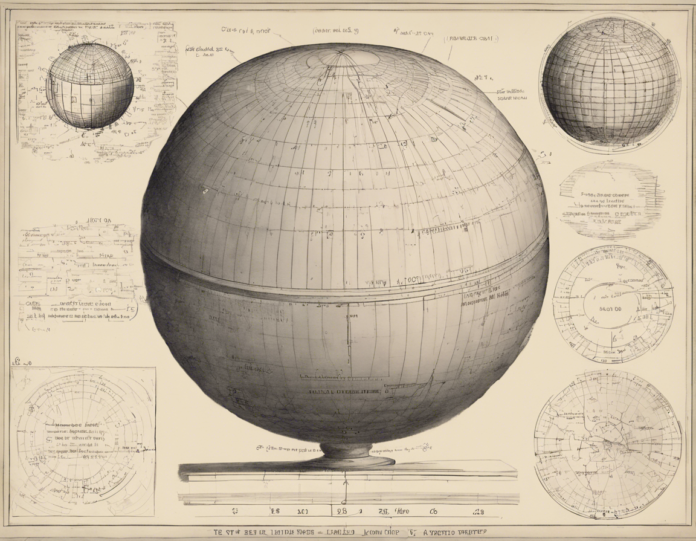Imagine a sphere cut perfectly in half – you now have what is known as a hemisphere. These half-spherical shapes are often encountered in various real-world applications, such as in containers, architectural domes, and even in biology. Calculating the volume of a hemisphere is a simple but essential mathematical concept that finds use in many fields. In this comprehensive guide, we will delve into the step-by-step process of determining the volume of a hemisphere, explore the relevant formulas, provide practical examples, and address some common queries related to this topic.
Understanding the Concept of a Hemisphere
Before we venture into the calculations, let’s understand what a hemisphere is. A hemisphere is essentially half of a sphere, cutting along its equator. It has a flat base and forms a domed shape on the rounded side. The key properties of a hemisphere include its curved surface area, total surface area, and volume. In this guide, we will focus specifically on calculating the volume of a hemisphere, which is a measure of how much 3D space it occupies.
Formula for Calculating the Volume of a Hemisphere
To calculate the volume of a hemisphere, we will use the following formula:
[ V = \frac{2}{3} \pi r^3 ]
Where:
– ( V ) = Volume of the hemisphere
– ( r ) = Radius of the hemisphere
– ( \pi ) (pi) ≈ 3.14159
Step-by-Step Calculation Process
Let’s break down the calculation process into simple steps to make it easier to understand and apply:
-
Obtain the Radius (r): Measure the radius of the hemisphere. It is the distance from the center of the circular base to the outer edge.
-
Apply the Formula: Once you have the radius, plug the value into the formula ( V = \frac{2}{3} \pi r^3 ).
-
Calculate the Volume: By substituting the radius value into the formula, you can now calculate the volume of the hemisphere.
Example Calculation
Let’s work through an example:
Given: Radius, ( r = 5 ) cm
Using the formula:
[ V = \frac{2}{3} \pi (5)^3 ]
[ V = \frac{2}{3} \times 3.14159 \times 125 ]
[ V = \frac{2}{3} \times 392.699 ]
[ V ≈ 261.799 \, cm^3 ]
Therefore, the volume of the hemisphere with a radius of 5 cm is approximately 261.799 cubic centimeters.
Properties of a Hemisphere
- The curved surface area of a hemisphere is half the surface area of a sphere with the same radius.
- The total surface area includes the curved surface area plus the flat base area.
- The volume of a hemisphere is strictly two-thirds of the sphere with the same radius.
Practical Applications
Understanding how to calculate the volume of a hemisphere can be beneficial in various practical scenarios. For instance:
– Architects and engineers can use this concept in designing domes and arches.
– Manufacturers can determine the capacity of hemispherical tanks and containers.
– Students and educators can apply this knowledge in geometry and mathematics classes.
Tips for Simplifying the Calculation Process
To make the calculation of hemisphere volume more manageable, keep the following tips in mind:
– Use a Calculator: Given the involvement of pi and cube of the radius, using a calculator can streamline the computation.
– Round Off Appropriately: Depending on the context, round off the final volume to a suitable number of decimal places.
– Verify Units: Ensure that the units of radius are consistent (e.g., all in centimeters) to avoid errors in the final volume calculation.
Frequently Asked Questions (FAQs)
- What is the difference between a hemisphere and a semi-sphere?
-
A hemisphere is half of a complete sphere, cut along its equator, while a semi-sphere refers to half of a sphere cut along any plane passing through its center.
-
Can the formula for calculating the volume of a hemisphere be used for a semi-sphere as well?
-
Yes, the formula remains the same for a semi-sphere as it is essentially half of a hemisphere.
-
How is the volume of a hemisphere related to the volume of a cone?
-
The volume of a hemisphere is double the volume of a cone with the same base radius and height.
-
In what units is the volume of a hemisphere typically expressed?
-
The volume of a hemisphere is generally expressed in cubic units (e.g., cubic centimeters, cubic inches).
-
Why is the volume of a hemisphere two-thirds that of a sphere with the same radius?
- Since a hemisphere is half of a sphere, its volume is two-thirds that of the complete sphere containing it.
In conclusion, mastering the calculation of the volume of a hemisphere is essential for various mathematical and real-world applications. By understanding the formula, following the step-by-step process, and practicing with examples, you can confidently determine the volume of any hemisphere. Whether you are a student, professional, or an enthusiast of mathematics, this guide equips you with the knowledge to navigate the world of hemisphere volumes with ease and accuracy.









